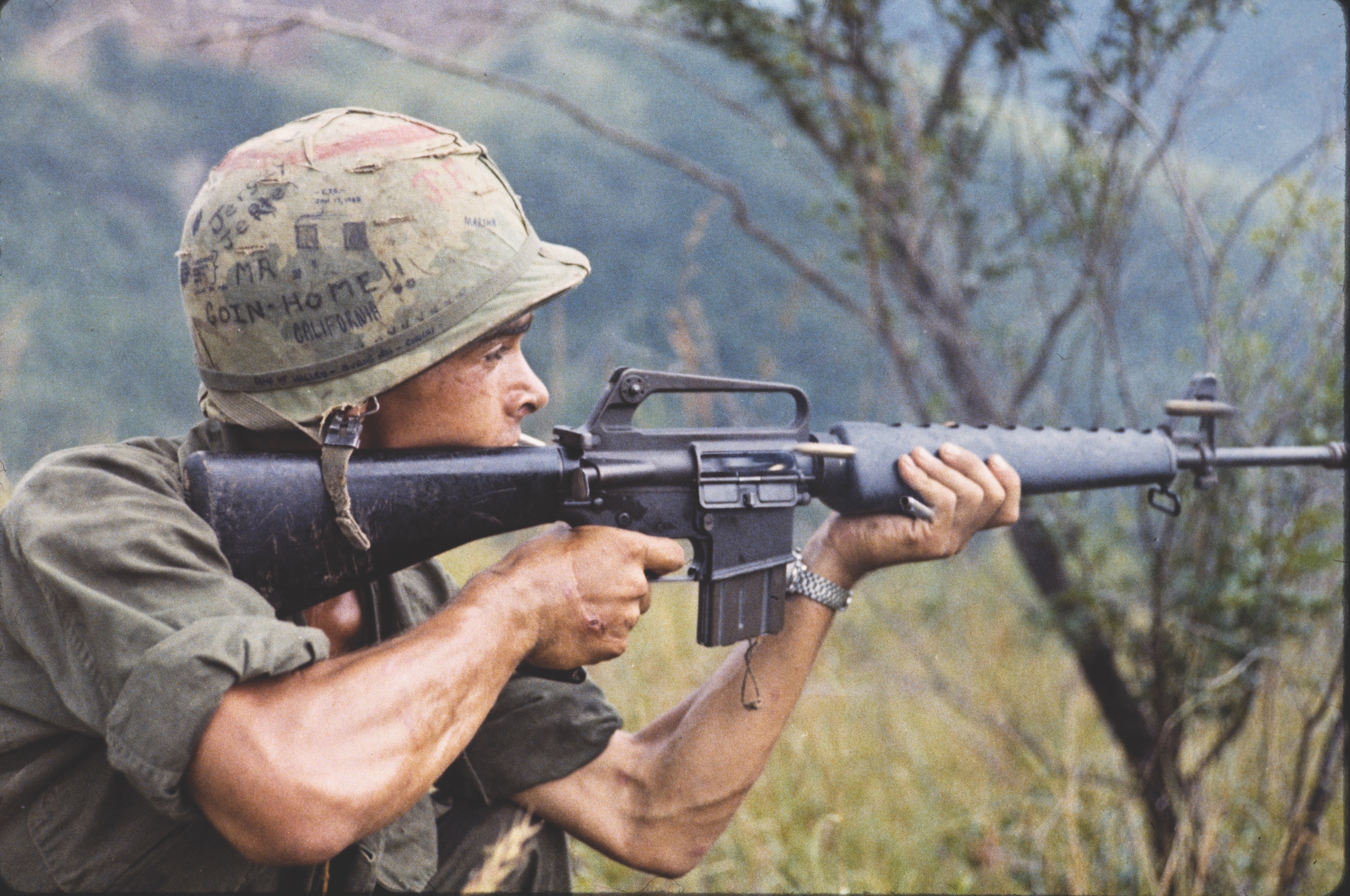
This extensively researched, well-written book was a pleasant surprise. Instead of a dry, boring, statistics-filled diatribe against the “black rifle,” as the M16 has been called because of its color, I discovered a thoroughly documented, fascinating case study of the tragically flawed process of introducing the assault rifle into combat in 1965.
Faced with the task of providing U.S. Marines and soldiers with a weapon comparable to the enemy’s Soviet-made AK-47 assault rifle, the Defense Department rushed the still-experimental XM16E1—a small-caliber, high-velocity weapon capable of full-automatic fire—into production and field use in Vietnam when it “wasn’t yet fit for service,” the authors note. Later versions, notably the M16A1 introduced in 1967, corrected many of the flaws, which could have been done earlier because they had been clearly identified by extensive, pre-issue testing.
The Defense Department’s egregious failures with the M16 reveal an astonishing, unforgivable story of bureaucratic incompetence and malfeasance. Indeed, the authors use the M16’s “misfire” fiasco to present an overall critique of America’s involvement in the Vietnam War: “To a large extent, the flawed decision-making that accompanied the introduction of the M16 rifle into combat operations by U.S. Army and Marine units in South Vietnam, beginning in 1965, was symptomatic of similar questionable decision-making that became the tragedy of the war in Vietnam in terms of its ultimately disappointing outcome.”
They add that the flawed introduction of the M16 is “the tale of a well-intentioned but nevertheless misguided campaign by a global superpower, resulting in the loss of more than 58,300 American lives.”
Tragically, as the authors exhaustively document, some of those deaths were undeniably due to XM16E1 malfunctions. Unconscionably, senior commanders (from battalion leaders to the highest levels of the Army and Marines) blamed their troops for their own deaths, falsely insisting that failure to properly clean and maintain their weapons caused the malfunctions.
However, the “malfunction problem was the result of decisions made by people far from the shooting,” the authors point out. “Adding to the basic problems of design deficiencies and unsuitable ammunition was a basic lack of planning for the deployment of a new weapon.”
For example, the first M16 cleaning instructions were not provided until mid-1967, and the troops received no weapon-specific cleaning kits or lubricants. There were also no bore brushes and no chamber brushes. There was a lack of cleaning rods, and the initial-issue aluminum cleaning rods were easily broken. “Sometimes even magazines were in short supply,” according to the authors.
Serious problems afflicted the XM16E1, including: unchromed chambers and bores, which rapidly corroded in Vietnam’s hot, humid climate, regardless of frequent cleaning, and unsuitable powder ammunition, dangerously increasing the rate of fire, causing buffer/bolt malfunctions, firing pin breakages and excessive chamber/bore fouling.
Yet, the weapon’s most serious—often fatal—deficiency was its tendency to not fully eject its expended shells, which testing revealed was responsible for 90 percent of the rifle jams. In the event of such a malfunction, which would often occur when firing the weapon in combat, the rifleman had to push out the unextracted shell with a cleaning rod—if he had one.
This deadly deficiency led Marine Maj. Dick Culver to describe the XM16E1 as a “magazine-fed, air cooled, single shot [emphasis added], muzzle ejecting shoulder weapon.”
The authors are not “weapons buffs” with axes to grind. Duryea, who died before the book’s publication, was a retired Army colonel and test officer (1964-66) for M16 prototypes. Orkand is a retired lieutenant colonel. Both served in Vietnam, leading troops of the 1st Cavalry Division (Airmobile) in combat. Tellingly, Duryea (Silver Star and Bronze Star with a “V” device for valor) relates that “my first casualty in Vietnam was one of my men being killed by return fire at night when his [XM16E1] jammed after firing one round at a group of approaching NVA [North Vietnamese Army] soldiers.”
The “villains” in the XM16E1’s “misfire” are legion: Defense Secretary Robert McNamara and his systems analysis-obsessed, but military-ignorant, “whiz kids” riding roughshod over any resistance; entrenched “gravel bellies” wedded to long-range, large-caliber, semi-automatic-only rifles; ordnance department officials resisting small-caliber, high-velocity, automatic weapons for all infantry soldiers; Defense Department and corporate executives obsessed with lowering production costs; all levels of civilian/military leaders who, through ignorance or malfeasance, neglected to provide troops with the necessary training, instructions, maintenance materials and equipment; and senior commanders who ignored their duty to their troops and blamed their own men for the weapon’s gross deficiencies.
This excellent book’s only minor deficiency is not the authors’ fault: Misfire suffers from too-frequent, inexcusable redundancy due to sloppy, inattentive editing by the publisher.
This feature originally appeared in the April 2020 issue of Vietnam magazine. To subscribe, click here.

